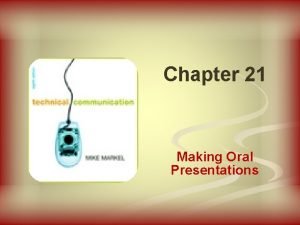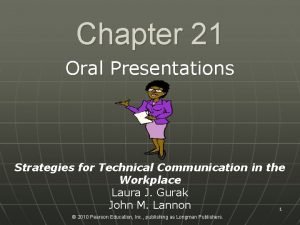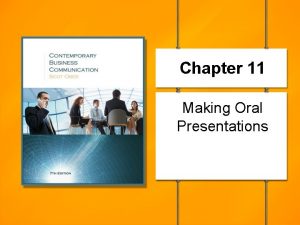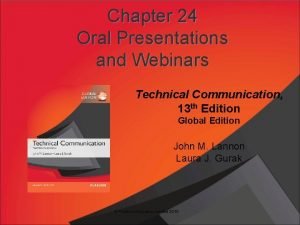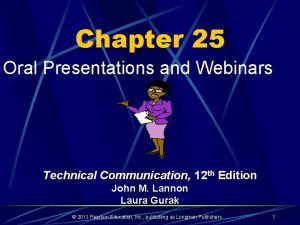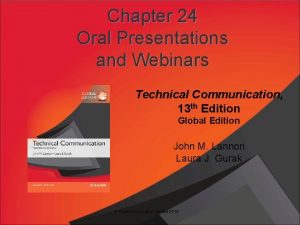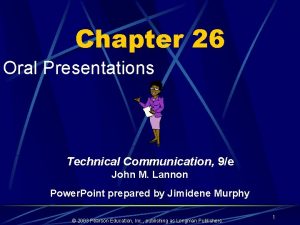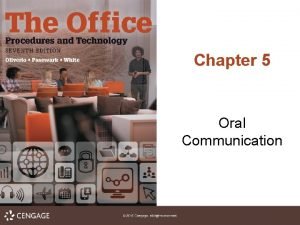Chapter 21 Oral Presentations Strategies for Technical Communication








- Slides: 8

Chapter 21 Oral Presentations Strategies for Technical Communication in the Workplace Laura J. Gurak John M. Lannon 1 © 2010 Pearson Education, Inc. , publishing as Longman Publishers.

Oral Presentations Are Interactive Advantages of interactivity: § You give and take information through body language, vocal tone, and eye contact. § You can see audience reactions. § You receive immediate feedback, and you can change direction instantly. § You can answer questions right away. 2 © 2010 Pearson Education, Inc. , publishing as Longman Publishers.

Types of Oral Presentations n n n Informative Training Persuasive Action Plan Sales 3 © 2010 Pearson Education, Inc. , publishing as Longman Publishers.

Parts of Oral Presentations n Introduction • • n Capture audience attention Establish credibility Preview your presentation Inform the audience of the purpose of the presentation Body • Structure material into small chunks • Use transition statements n Conclusion • • • Remind audience of big picture/ Restate main points Leave listeners with final advice Distribute handouts 4 © 2010 Pearson Education, Inc. , publishing as Longman Publishers.

Preparing Oral Presentations § § § Research and connect the topic to your audience Create an outline or storyboard Determine a Delivery Style § § § § Memorized Impromptu Scripted Extemporaneous Choose your Technology Plan the Use of Visuals Practice the Presentation 5 © 2010 Pearson Education, Inc. , publishing as Longman Publishers.

Strategies for Preparing for Oral Presentations n n n n Determine your audience. Determine your purpose. Do your research. Decide on your delivery style. Organize your presentation. Choose your technology. Use visuals. Rehearse your presentation. 6 © 2010 Pearson Education, Inc. , publishing as Longman Publishers.

Using Presentation Software § § § § § Remember, software is only a tool. Have a backup plan in case the technology fails. Start with an overview slide. Find a balance between text and visuals. Avoid using too many slides. Don’t simply read the slides. Avoid too much flash. Keep viewers oriented. End with a “conclusions” or “questions” slide. 7 © 2010 Pearson Education, Inc. , publishing as Longman Publishers.

Any Questions? For additional help reviewing this chapter, please visit the Companion Website for your text at http: //www. pearsonhighered. com/gurak 8 © 2010 Pearson Education, Inc. , publishing as Longman Publishers.
 Designing and delivering oral and online presentation
Designing and delivering oral and online presentation Types of oral presentations
Types of oral presentations Slide to doc.com
Slide to doc.com What is oral communication and written communication
What is oral communication and written communication Difference between oral and written communication
Difference between oral and written communication Craft of scientific presentations
Craft of scientific presentations Titles for mental health presentation
Titles for mental health presentation Worst powerpoint presentations
Worst powerpoint presentations What are multimedia presentations
What are multimedia presentations

